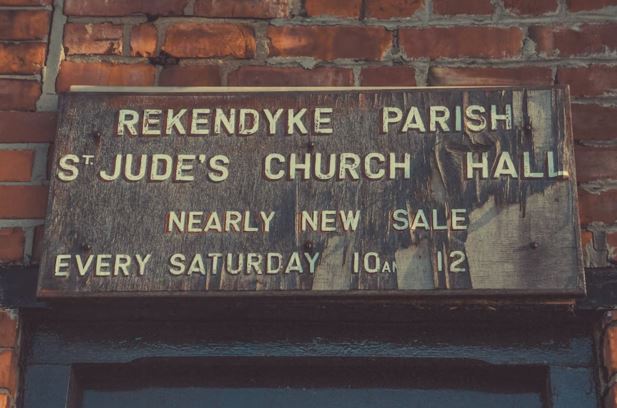Signage is a ubiquitous sight while driving down roads, ranging from brick and mortar to monument signs and the latest trend-led message center signs.
When it comes to designing a sign, the intended audience plays a crucial role. So, who is the sign meant for? In my opinion, signs cater to two primary groups of people: first, visitors who are searching for a specific location or business, and second, individuals who are unfamiliar with a specific location or business and need to be attracted to it.
It’s important to ponder on this and note that the business owner or employees don’t need a sign in front of their location. This thought can be applied to church and school signs as well.
Designing Church and School Signs
When designing signage for churches and schools, it’s essential to focus on the needs of visitors and the unchurched, rather than existing members or employees. The purpose of these signs is to attract new people and generate interest in the church or school.
To effectively reach the unchurched, the design elements of the sign must be tailored to their needs. Many churches express a desire to reach the unchurched, yet their signs are designed primarily for those who already know about the church.
Therefore, it’s important to consider which elements of a church or school sign would appeal to an unchurched passerby. By doing so, we can create signs that are both attractive and effective in reaching our desired audience.
Basic Features of Designing Signage
Several critical factors must be considered in sign design. Some of the essential elements include:
Font Size
Font size is an important element of sign design as it directly impacts the readability and visibility of the sign. The font size should be large enough to be easily readable from a distance, especially for those who may be driving or walking by quickly. The size of the font also needs to be proportional to the sign’s overall size, so it does not appear cramped or difficult to read. A good rule of thumb is to have a minimum of 3 inches in height for every 10 feet of viewing distance. This ensures that the sign can be easily read and understood by anyone who sees it, regardless of their location or the speed at which they are passing by.
Symbols
Symbols can be very relevant as they can convey a message quickly and effectively without the use of words. Symbols are often universal and can be understood by people from different backgrounds and cultures. For example, a cross is a universal symbol for a church, and a school building is a recognizable symbol for a school. Incorporating symbols in sign design can help to catch the attention of passersby and communicate the purpose of the sign at a glance. It can also help to create a unique identity for a church or school and make it easily distinguishable from other establishments. However, it’s important to choose symbols that are appropriate and relevant to the message being conveyed, as well as the audience who will be viewing the sign.
Colors
Colors play an important role in sign design as they can convey different emotions, feelings, and messages. As an example, warm hues such as red, yellow, and orange can convey a sense of excitement or urgency, whereas cooler tones like blue and green can elicit feelings of tranquility and trust. Different colors also have cultural associations, and it’s important to consider the target audience and their cultural background when selecting colors for a sign.
Colors can also be used to create contrast and improve visibility. High-contrast color combinations like black and white or yellow and black can make text or symbols stand out and be more readable from a distance.
Location
Location is also crucial as it determines the size, shape, and visibility of the sign. The location of the sign will determine how far away it needs to be seen and how much attention it needs to draw. For example, a sign located on a busy highway will need to be much larger and have brighter colors than a sign located in a quiet neighborhood street. The location also affects the direction the sign faces, the height it is installed, and the type of mounting required. Properly considering the location of a sign is essential to ensure it is seen by its target audience and effectively conveys its message.
Lighting
Lighting is an important consideration too as it can greatly affect the visibility and readability of the sign. Proper lighting ensures that the sign is visible at all times, especially during the night or in low-light conditions. Illumination can be achieved through different methods such as backlit signs, front-lit signs, edge-lit signs, or spotlighting. The choice of lighting depends on various factors such as the location of the sign, the type of sign, and the message it needs to convey. For example, a front-lit sign might be more appropriate for a business sign that needs to be easily read from a distance during the day, while a backlit sign might be better for a monument or building sign that needs to be visible at night. Proper lighting can enhance the visibility and readability of the sign, thereby increasing its effectiveness in conveying the intended message.
Conclusion
Overall, church signs are an important aspect of church communication and outreach. They can help to build a positive image of the church, attract visitors, and create a sense of community within the congregation and beyond.
ShieldCo creates custom signs for churches that are beautiful, efficient, and budget-friendly. They also give suggestions based on what you need in your church. Get a free quote today!

